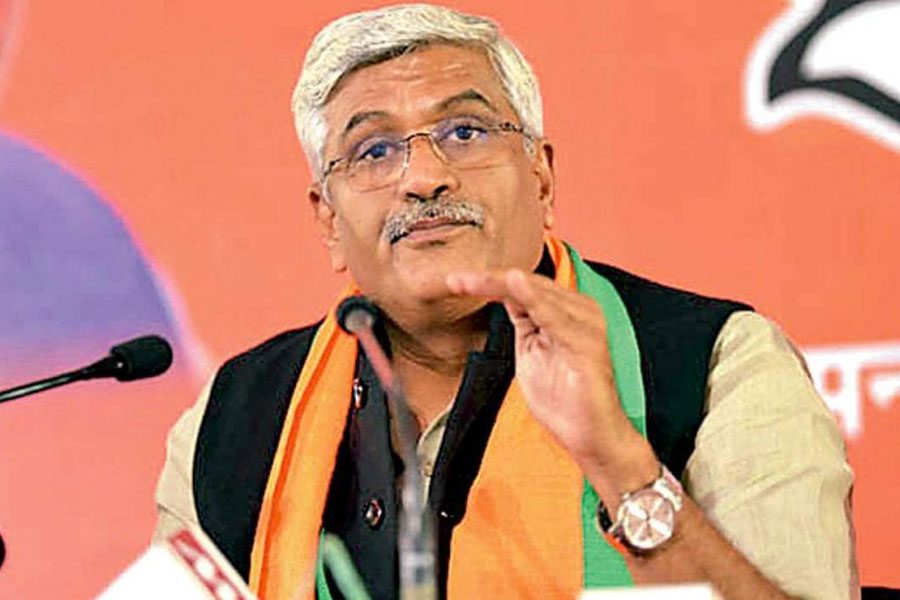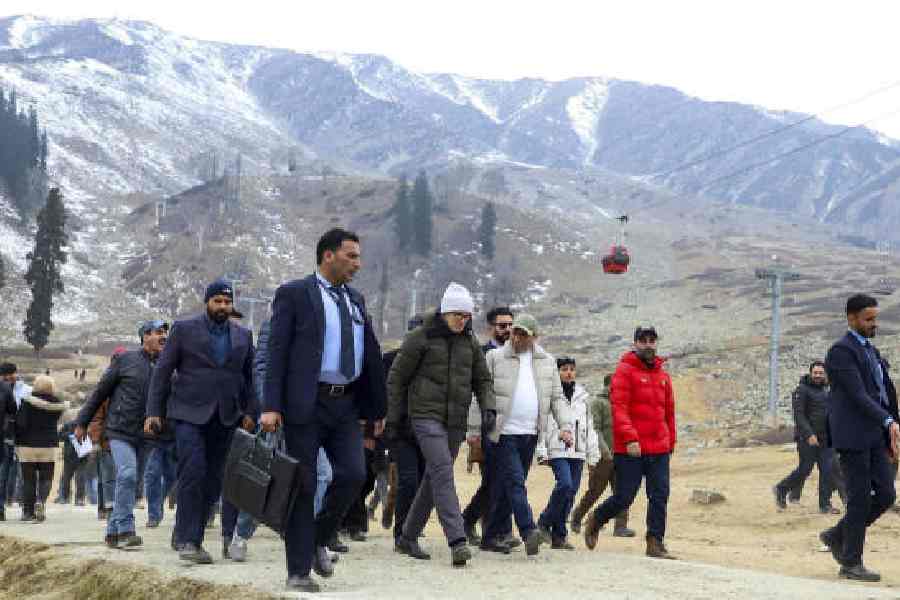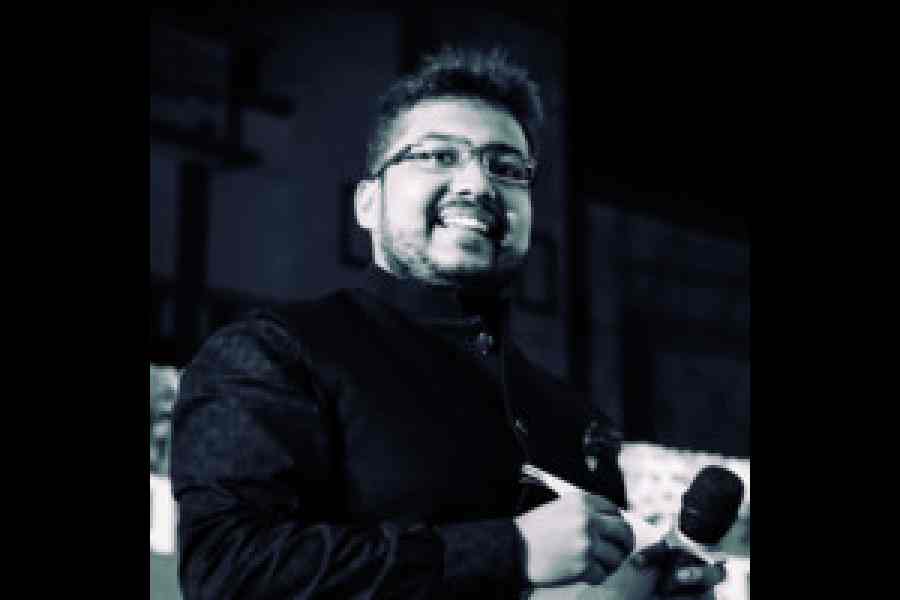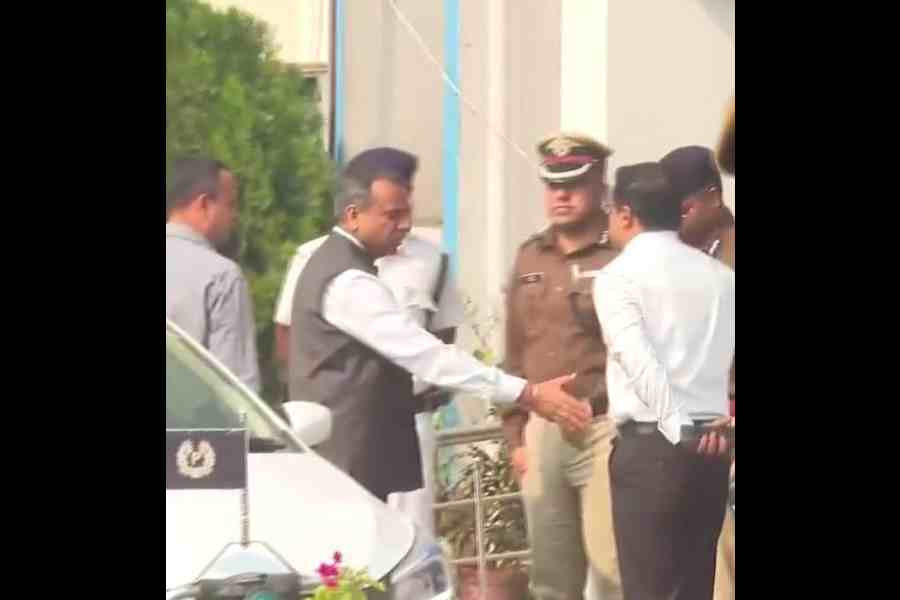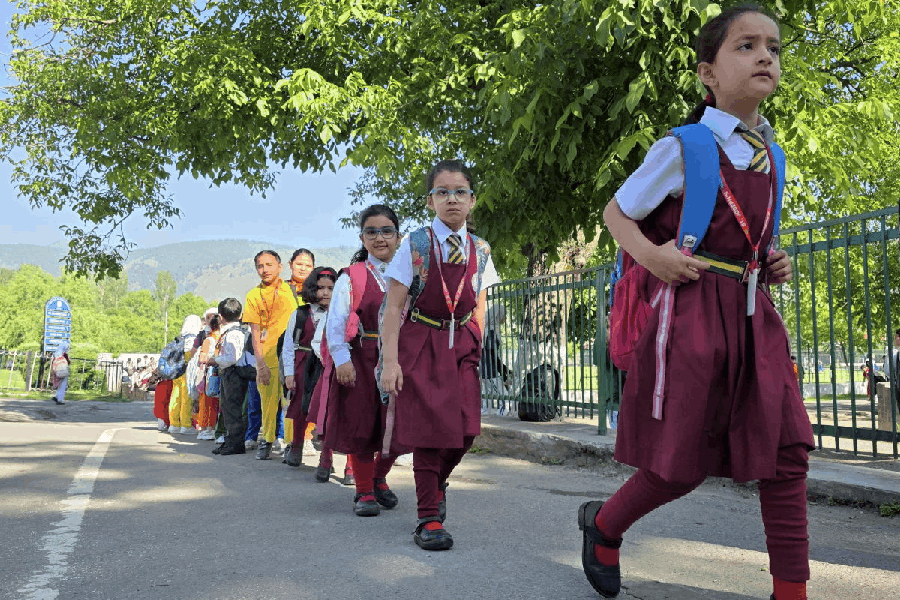 |
 |
 |
 |
 |
 |
 |
| Coming out party: (From top) Talk show host Rose; a still from Gulabi Aaina, director Sridhar with one of his transgender actors, a fashion show of transgenders; a karate camp held for them in Chennai; Kalki Subramaniam and her matrimonial website for transsexuals, thirunangai.net |
Rose remembers the life she led as Ramesh Venkatesan. As a student at Louisiana Tech University, Dallas, Venkatesan liked to dress as a woman. “It bothered my conventional wisdom,” recalls the Chennai resident who left a protective business family to study bio medical engineering in the United States.
Venkatesan began living a double life — a male student by day and a female gay-bar-hopper by night. “I explored the Internet to find answers to my sexuality. I was lonely, depressed and even attempted suicide.” The breaking point came when Venkatesan’s parents called to say they’d found a suitable girl for him. “That was when I decided to take charge of my life.”
The post-graduate student returned to India, underwent a sex change operation and changed his name to Rose. And Rose became an anchor on a television talk show.
Urban India’s almost invisible transgender community, one of the most discriminated against sections in the country, is more noticeable now than ever before. Last week, the Election Commission gave transsexuals the right to choose their sex as “others” in the gender option on electoral rolls. They will no longer be forced to identify themselves as either male or female.
In Tamil Nadu, ration cards, voting cards, passports and admission forms for government schools and colleges carry an “others” option. “This started in 2007,” says Priya Babu, member, Tamil Nadu welfare board for transgenders. Set up two years ago, the board provides education scholarships and other incentives to transgenders.
That’s a long journey for the community, whose role for long was restricted to demanding money at weddings and at the birth of a child. “In the past, a transsexual either went into hiding or attempted suicide. They thought something was wrong with them. But this is changing because of education, empowerment and awareness,” says G.K. Karanth, professor of sociology, Institute of Social and Economic Change, Bangalore.
Mindsets are changing, agrees Rose, whose talk show on Star Vijay became popular for its candid discussions on issues ranging from marriage and divorce to social taboos. “I am treated like a professional in my work circles. My sexual status is incidental,” she says, as she busies herself with producing two more television shows — one on fashion and another on making dreams come true. “I even plan to direct an English film,” Rose says.
Transgender — according to some estimates, it’s a one million-strong community in India — is an umbrella term for people who are born in one sex but have the physical or anatomical characteristics of or psychologically feel like the opposite sex.
Of course, most members of the community are still living in slums, eking out their livelihoods by begging at traffic lights or through sex work. But a small section is in mainstream consciousness — from art to books and television to cinema.
Chennai-based sculptor George Kuruvilla became fascinated with transsexuals when he visited their festival at Koovagam, near Pondicherry, a decade ago. “I found them to be colourful, tormented people,” he says.
Kuruvilla’s first exhibition of sculptures on transsexuals was held in Mumbai in 2006. The exhibition has travelled to New York and Paris. An exhibition with one of his transgender works opened in Delhi on November 16. “I have sculpted a flower on the faces of the transgenders to show their fragility,” says Kuruvilla.
Transvestites have indeed found a face. Random House published Aids Sutra last year, a collection of essays about HIV in India. The book has an essay by Salman Rushdie on the life of a hijra or a eunuch. “The idea of the book is to give readers a chance to look closely at the groups that are hardest hit by HIV,” says editor Negar Akhavi.
The shemales, as the community members are sometimes called, may not have stormed into mainstream life in urban India, but activists believe that the visible face will help tackle the problems of the majority. “An intellectual minority is looking at them differently,” stresses Arpita Das, publisher, Yoda Press — which brings out books on alternative sexuality. “And since the stigma attached to the community is so huge, every small change stands tall.”
Among the new developments is a website. When Kalki Subramaniam’s transgender friend Radha wanted to get married, Subramaniam asked her to post her profile on a matrimonial website. “But Radha’s profile was rejected because she stated she was a transsexual,” says Subramaniam, founder of Sahodari Foundation, a non governmental organisation (NGO) working for transgenders in Chennai.
That’s when Subramaniam, a professional web designer, decided to launch a matrimonial website for transsexuals. thirunangai.net — which went live in August — has six marriage profiles. All six women are “looking for a man who will introduce his wife to his friends and family, respect her and take her to public places,” says Subramaniam, adding that she was stumped by the responses that poured in. “We have received 150 proposals so far, from software professionals, businessmen, doctors and a scientist.”
Subramaniam lives in a middle class locality in Chennai, drives a car and carries a laptop. For a transgender, this is a big social and economic leap. “Till a few years ago, all transgenders were branded as sexual perverts or clowns. But I feel less discrimination now,” says the activist. A double post graduate, Subramaniam underwent a sex change operation five years ago.There has been a change in the social profile of the transgender community, agrees sociologist Karanth. “They are not all illiterate, poor and rustic any more. This has helped change perceptions,” he asserts.
Laxmi Tripathi agrees that she is a product of changing times. The Mumbai-based entrepreneur who runs nine dance schools across the city has been buried in business plans and office blue prints lately. Last month, she launched an event management firm called 12 Noon Entertainment. “I am the only transgender on the company’s board. But that doesn’t set me apart from the rest,” says the graduate of Mumbai’s Mithibai College.
Tripathi is also a regular on television reality shows. She featured on Sach Ka Saamna recently and has shot for two more shows. “Transgenders are becoming visible in society now. That’s a huge change,” she says.
Education has brought empowerment to the community, believes Priya Babu of the Tamil Nadu welfare board. “It has also helped it become aware of its rights,” she says.
The successful movement against Article 377 of the Indian Penal Code — which describes homosexual intercourse as “sex against nature” — did its bit too. The spiraling movement across the country saw the transgender community spilling into the streets for a legal cause. “They were the most visible face of the movement,” adds Das of Yoda Press.
The threat of an HIV epidemic also helped India’s marginalised third sex in a round-about way. It thrust the community — many of whom are in the sex trade — into the national spotlight. “There has been a flurry of counter-Aids activity in India. NGOs are sprouting and funds are being pumped in. The community has gained from this — both in terms of monetary assistance and attention,” says Subramaniam. Chennai, for instance, has 10 NGOs and other organisations working for the community. “Also, several people from the city’s Rotary Club and Lions Club are involved with the community,” says A.J. Hariharan, founder, Indian Community Welfare Organisation, Chennai (ICWO).
A decade of grassroots work has also helped the lesbian gay bisexual and transgender (LGBT) movement to mature. “The movement has gone beyond narrow activism and screaming for recognition. It is now looking at other issues of daily life — relationships, education, jobs and organising social outings,” says Pawan Dhall, a gay activist with Calcutta-based Saathii, which works for the LGBT community. Saathii has adopted a transgender community in Bhadrak, Orissa. “We are providing them with loans to start businesses,” explains Dhall.
Last month, 15 people attended a personality development and karate camp held for transgenders in Chennai. “The idea was to make them competent to get jobs,” says Reshma Sharma, an instructor in the Dojo Chakra and Mythri Educational and Charitable Trust, which organised the camp. “Six firms have agreed to hire our trainees as security guards,” adds Sharma. Next year, the trust will teach computers and choreography to the community.
Chennai is also gearing up to host a beauty pageant next month. The Ms India Transgender — being organised by the ICWO — will be an out and out beauty extravaganza,” says Hariharan, who expects 1,000 participants from across India.
But beauty contests are not a yardstick of social change. And not everybody has a happy story to relate. After five years of intensive training, Akkai Padmashali plans to discontinue her classical music lessons. The information officer at Sangama, a Bangalore-based NGO, met several concert organisers. “Everyone likes my voice and promises to organise a show. But they never revert,” says Padmashali, who believes that it’s her sex that puts off the organisers.
The bottom line, says filmmaker Sridhar Rangayan, is that India’s transgender community continues to live on the fringes of society. “The discourse on empowering the third sex is still with the activists; the ground realities remain the same,” says Rangayan, whose film Gulabi Aaina had two transgenders as its protagonists. “When you see transsexuals working as doctors, lawyers and courier persons, then they will really be in the mainstream,” he says.
It’s going to be a long haul.


